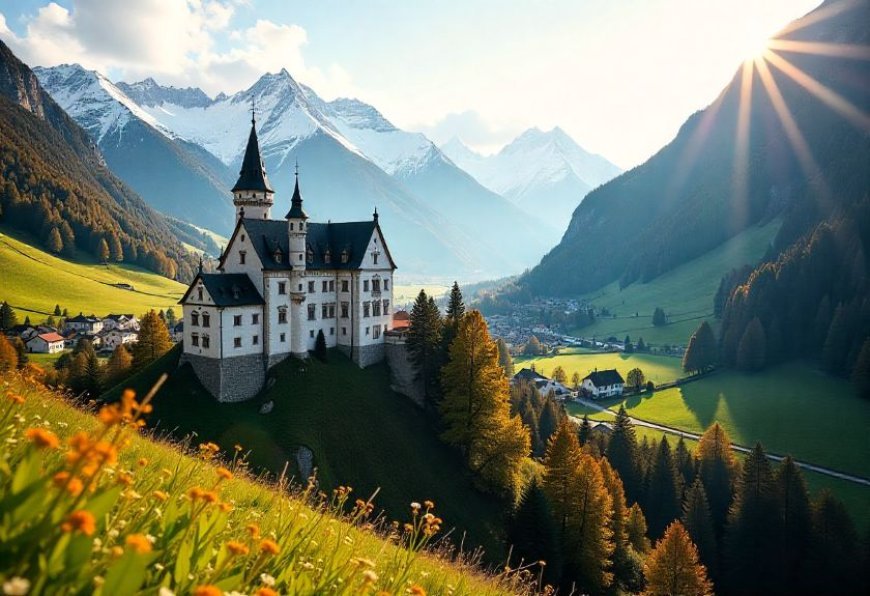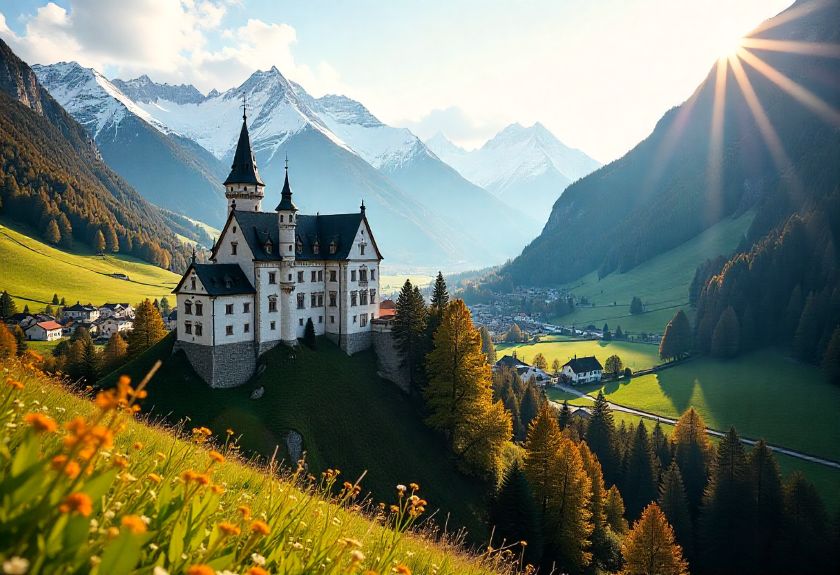Liechtenstein, The Hidden European Gem Where Wealth Meets Tranquility And Beauty


Located between Switzerland and Austria lies the Principality of Liechtenstein, a diminutive German-speaking country that consistently astounds the world with it’s immense riches and masterful administration. With merely 160 square kilometers of terrain and no commercial airport nor tender of its own, it might seem this pocket-sized principality would struggle to leave an impression. Yet Liechtenstein stands as one of Europe’s most opulent and secure microstates, renowned for its staggering wealth per capita, verdant valleys and rugged alpine landscapes, and remarkably well-run government that sustains a high quality of life for its citizens. For those seeking respite from hurry and bustle, unspoiled vistas of rearing mountains and flowing fields, or a taste of the luxurious lifestyle of its well-heeled residents, a visit to this little country is a experience not to be missed.
Must-See Landmarks and Attractions in Liechtenstein
Liechtenstein may be small in size, but it boasts a number of fascinating and picturesque tourist attractions that attract visitors from all over the world. The country’s unique blend of natural beauty and historical sites ensures that there’s something for every type of traveler:
- Vaduz Castle: The capital city of Vaduz is home to the famous Vaduz Castle, which has stood for over 700 years. The castle is the residence of the princely family and offers visitors a glimpse into the country’s history and royal heritage. Although it is not open to the public, the surrounding grounds offer stunning views of the city and the Alps.
- Liechtenstein National Museum: Located in Vaduz, this museum provides an in-depth look at the country’s history, culture, and art. The museum is a great place for tourists to learn about Liechtenstein’s unique heritage and its evolution from a small principality to a prosperous nation.
- The Gutenberg Castle: Situated in the town of Balzers, Gutenberg Castle is another historical site with origins dating back to the 12th century. The castle is open to visitors, offering panoramic views of the surrounding area and a chance to experience medieval architecture.
- Alpstein Mountain Range and Skiing: Liechtenstein is a haven for nature lovers and adventure seekers. The alpine region offers hiking trails, scenic views, and plenty of skiing opportunities during the winter months. Ski resorts like Malbun are popular among tourists, especially during the ski season.
- The Vaduz Art Museum: This modern art museum showcases a collection of contemporary works by both international and local artists. With its striking architecture and well-curated exhibits, it attracts art enthusiasts from around the world.
- The Prince of Liechtenstein Winery: Situated in the heart of the country, the Prince of Liechtenstein Winery is a unique attraction offering wine tasting and vineyard tours. Visitors can enjoy some of the country’s best wines while taking in the scenic views of the surrounding landscape.
How to Get to Liechtenstein: Nearby Airports and Travel Tips
While Liechtenstein does not have its own international airport, travelers can easily reach the country by flying into nearby airports in Switzerland or Austria. The following airports serve as the closest gateways to Liechtenstein:
- Zurich Airport (Switzerland): Zurich Airport, located about 120 kilometers from Vaduz, is the most popular airport for travelers heading to Liechtenstein. It offers direct flights from most major international destinations and provides easy access to Liechtenstein via a short drive or train ride.
- Friedrichshafen Airport (Germany): Located about 120 kilometers from Liechtenstein, Friedrichshafen Airport in Germany is another good option for travelers. It provides convenient access to Liechtenstein via train or car.
- Innsbruck Airport (Austria): Innsbruck Airport, about 100 kilometers away, also serves as a viable option for tourists traveling to Liechtenstein. With regular flights from European cities, it is an excellent alternative for travelers coming from within Europe.
Tourist Arrivals: How Many People Visit Liechtenstein Each Year?
Although exact numbers for annual tourism to Liechtenstein are not readily available, it is estimated that the country receives around 100,000 to 150,000 visitors each year. The country’s small size and limited infrastructure mean it isn’t a mass tourist destination, but it has seen an increase in visitors, especially from neighboring countries like Switzerland, Austria, and Germany.
Tourism in Liechtenstein has grown in recent years, with an increasing number of travelers seeking the peaceful environment, stunning alpine views, and rich cultural experiences the country offers. Liechtenstein’s status as a safe and beautiful destination, combined with its economic prosperity, makes it an attractive option for affluent travelers and those seeking luxury escapes.
Liechtenstein’s Wealth and Safety: What Makes It Special
Liechtenstein’s uniqueness extends beyond its geographical features. Despite not having its own airport or currency, the country has maintained a remarkably high standard of living and one of the lowest crime rates globally. The Swiss Franc (CHF) is used as the currency, and German is the official language. The country operates as a constitutional monarchy, where the princely family plays a key role in governance.
Key Facts About Liechtenstein: What Makes It Stand Out
- Landlocked and Doubly Landlocked: Liechtenstein is one of only two doubly landlocked countries in the world, meaning it is completely surrounded by other landlocked nations. This unique geographic feature adds to its charm.
- Per Capita Income: With an average annual income of $197,000 per person, Liechtenstein ranks as the second wealthiest country in Europe by per capita income, just behind Monaco.
- Employment: Liechtenstein supports more jobs than it has residents. With a labor force of around 42,500 people, the country benefits from a high level of cross-border commuters, primarily from Switzerland and Austria.
A Bright Future: Liechtenstein’s Role on the World Stage
Despite being one of the smallest countries in the world, Liechtenstein thrives economically and socially. Its robust banking sector, high-tech industries, low crime rates, and strong economic policies have contributed to its success. With its fairy-tale castles, pristine landscapes, and commitment to innovation, Liechtenstein has earned its reputation as one of Europe’s most desirable yet often overlooked destinations.
Conclusion: Why Liechtenstein Should Be on Your Travel List
Liechtenstein may be small but packs dramatic beauty within its borders. Towering Alpine peaks form a natural border with Switzerland, sheltering verdant valleys and rushing rivers beneath. There, medieval castles perched upon craggy hilltops overlook picturesque towns with a rich cultural history. While its economy flourishes through worldwide financial success, traditional charm remains. Visitors can explore this bucolic setting through hiking wilderness trails between quaint villages or delving into world-class art and architecture within its urban hubs. This thriving constitutional monarchy offers an ideal balance of natural splendor and social progress within a compact area, proving great things come in small packages.
The post Liechtenstein, The Hidden European Gem Where Wealth Meets Tranquility And Beauty appeared first on Travel And Tour World.






